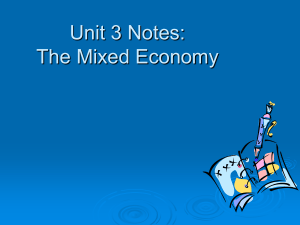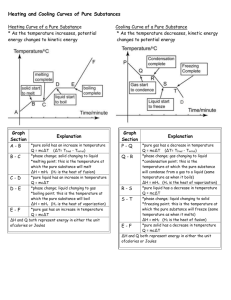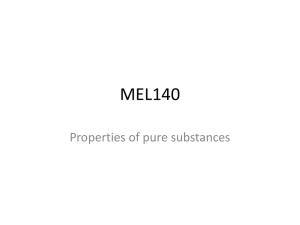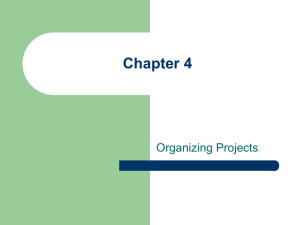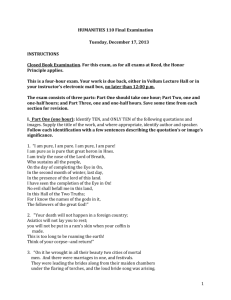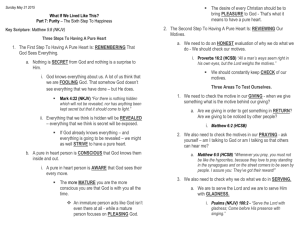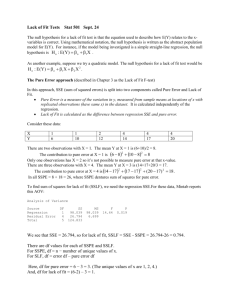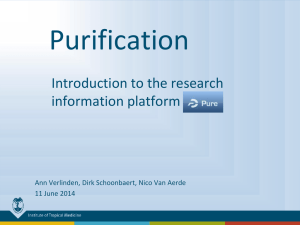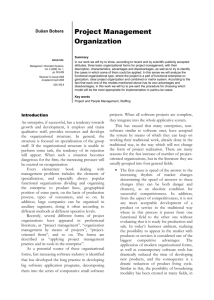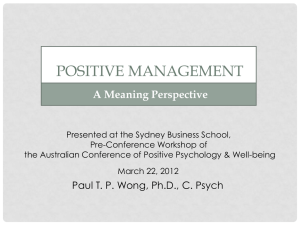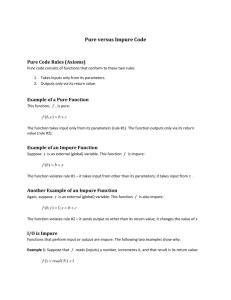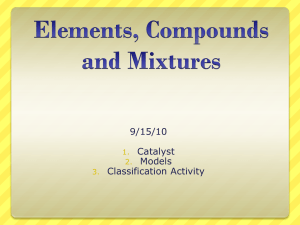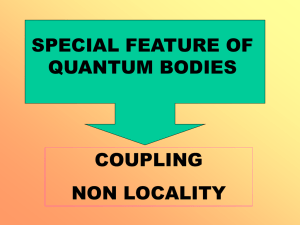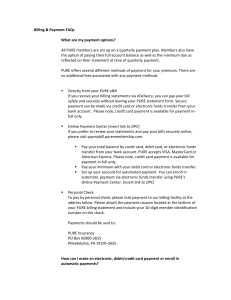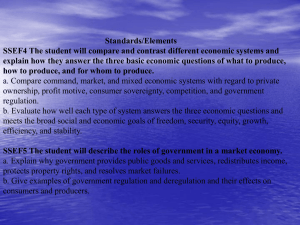The_Mixed_Economy
advertisement
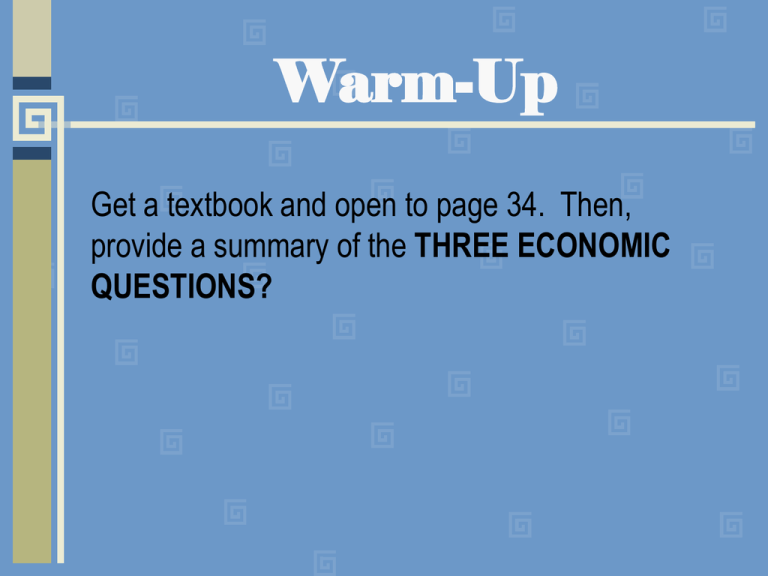
Warm-Up Get a textbook and open to page 34. Then, provide a summary of the THREE ECONOMIC QUESTIONS? Chapter 5 Notes: The Mixed Economy Pull out a blank sheet of paper…and let’s begin our next unit. Three Basic Econ Questions • What to Produce??? • How to Produce??? • For Whom to Produce??? •Command (Pure Centrally Planned Economy) • Government produces everything. All resources are government owned and production is coordinated by the central plans of government. •Pure Capitalistic (Pure Market Economy) • Private enterprise produces everything. There is no government at all. •Mixed Capitalism (Mixed Economy) • Combination of government and private enterprise Student Diary A & B Activity • Write a maximum 1-2 sentence summary of the conditions in: (a) Student Diary A and (b) Student Diary B. • Pick 3 words to describe each type of economy. • Which “Student” would you prefer to be? Student A or B? Why? How To Produce? For every economy, the goods are produced by private enterprise, the government, or a combination of both. Government OR Private Businesses Pure Market Economies and Pure Centrally Planned Economies • Read on pages 35-38 • Complete the handout by writing a brief summary of each of the weaknesses associated with both economic systems. Advantages and Disadvantages • On your paper, create a chart that lists the advantages and disadvantages of the three different economic systems. Advantages COMMAND “define it” PURE “define it” MIXED “define it” Disadvantages Making a JUMBO Flow Chart • For both a pure market economy and a pure centrally planned economy…it comes with problems. • After having read them, get into groups of 4 and create a flow chart that highlights the flaws with both economic systems. Your Flow Charts Must: • Write out each weakness • Provide a brief summary • Create an illustration of each weakness • I might ask groups to share out their answers …however, each group will be graded based on what I see on your paper!!! Problems with PURE MARKET ECONOMY Problems with PURE CENTRALLY PLANNED ECONOMY PME • Difficult enforcing property rights • Some people have few resources • Some firms try to monopolize markets • No public goods • Externalities PCPE • Consumers get low priority • Little choice of freedom • Central planning can be inefficient • Resources owned by the State are sometimes wasted • Environmental damage PURE CAPITALISM • PRIVATE ENTERPRISE PRODUCES EVERYTHING…meaning, INDIVIDUALS make the economic decisions…looking out for themselves and their families. Profit is the one and only motive • Advantages: People have the freedom to choose, provides competition so consumers get the best • Disadvantages: What happens to those that need help…the young, old, disabled…without the help of government? COMMAND • GOVERNMENT DECIDES HOW, AND PRODUCES EVERYTHING!!! • Only a few countries today still have much of a command economy. (i.e.-North Korea, China) • Advantages: ability to quickly reroute resources in case of emergencies [war], nationwide goals can be set • Disadvantages: creates no incentive to work hard, lack of consumer choice, inefficient Homework: Dear Abby… (2 paragraphs minimum) Dear Abby, I am the leader of a new country and our Parliament is in the middle of a heated debate on whether to design an economy that is primarily command-oriented or pure capitalistic-oriented. What should I advise our new Parliament members to do? And Why??? Sincerely, Confused Leader Stop, Drop, and Draw • Draw stick figures to illustrate the three different economic systems. • What can you draw to remember the differences between the three systems? MIXED CAPITALISM • BOTH GOVERNMENT AND PRIVATE ENTERPRISE • Most countries today are mixed!!! (United States, Great Britain, Mexico, France, Canada, Italy, Japan, etc….and the list goes on and on) WHY DO YOU THINK MOST COUNTRIES TODAY ARE MIXED???? (think about it!!!) Review: • Draw a horizontal line in your spiral notebook. Label the left side of the line, “pure market economy” and the right side, “pure centrally planned economy”. Place each of the following nations on your line at a place that you think accurately represents the current state of its economy. • United States, Mainland China, North Korea, Russia, Mexico On the Back… Writing Prompt: -Explain why a MIXED ECONOMY is the best way for countries to operate. Include the advantages that comes with being a mixed economy, rather, than a command or pure capitalistic economic system. -Create a BUTTON that illustrates the advantages of having a mixed economy. The U.S. Today There are 3 levels of our government: a. Federal (National) b. State (50 Individual States) c. Local (thousands and thousands of cities/counties) Stop, Drop, and Draw! • Draw a picture to represent the three levels of government!!! What Powers Does Our Gov’t Have? 1. Collect Taxes ($$$) -money, money, money 2. Provide Services -Medicare, Welfare, National Defense, etc… 3. Issue Regulations -laws for you and me to follow for society’s general welfare • By taxing, spending and regulating, a government is able to somewhat alter the answers to the 3 basic questions. • Production can be based on govt demand: schools, road • Government regulations can prevent the production of some goods and/or services • By taxing, the govt redistribute these funds to help the old and the poor “The Market” • NOT THE GROCERY STORE!!! • The term given to describe the exchange made between buyers and sellers How Best to be Efficient??? Larger Market (more buyers and sellers) More Division of Labor More Opportunities to be Efficient Question: • If individuals are motivated by the ‘invisible hand’ (profit), describe how the evolution of the market economy came into being!!! 1. 2. 3. 4. 5. 6. Division of labor Specialization Specialized capital Efficiency Allocation of resources Profit Evolution of the Market Economy (don’t write it down…it’s in your course notes) 1. 2. 3. 4. 5. 6. Division of Labor (people have specific tasks…think of the assembly line) Leads to Specialization (really good at one or a few products) Wants to become an expert in your good, so you develop specialized capital (good technology/tools) Leads to efficiency Allocate your resources (sell your goods) Leads to PROFIT!!!
